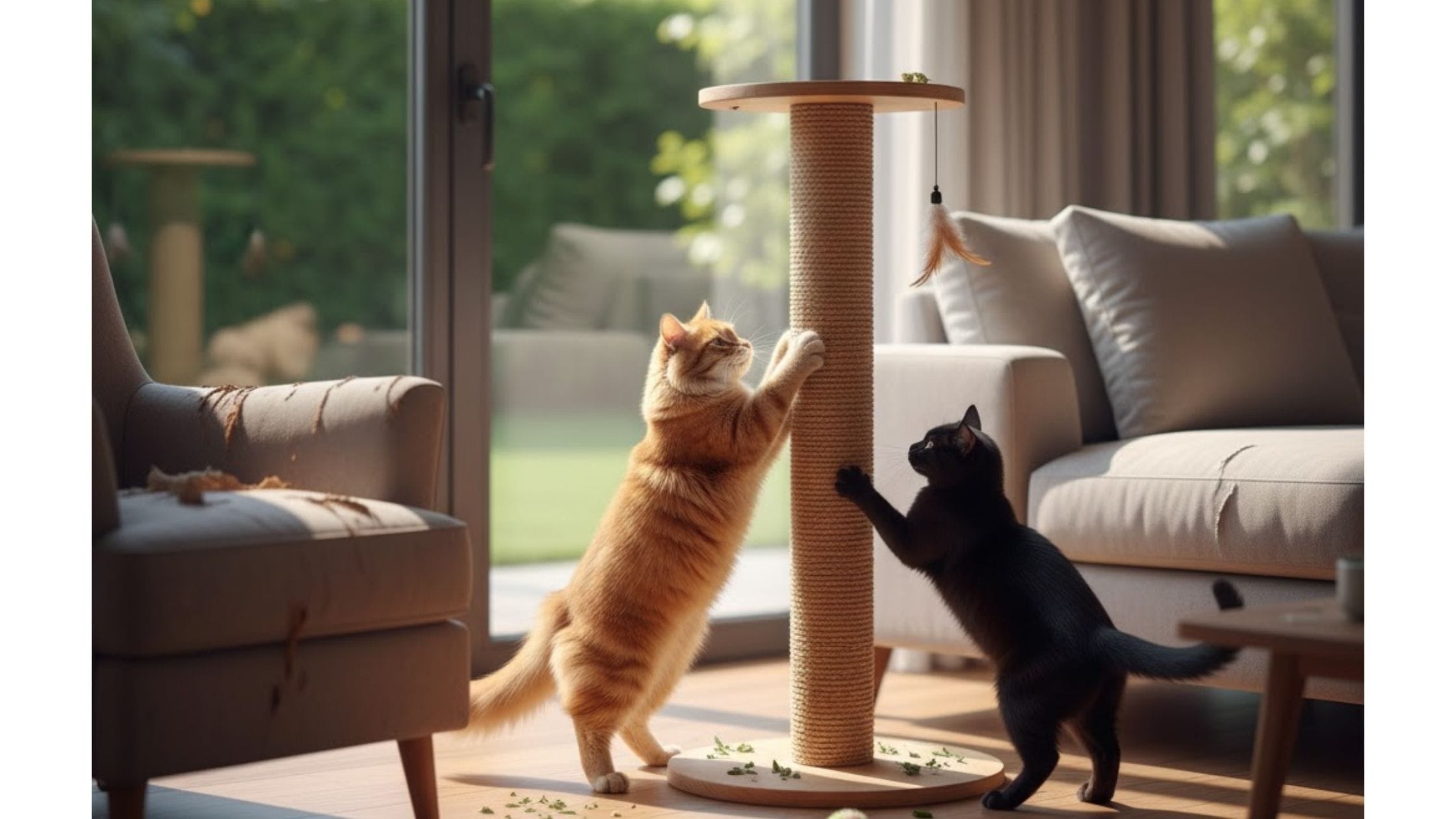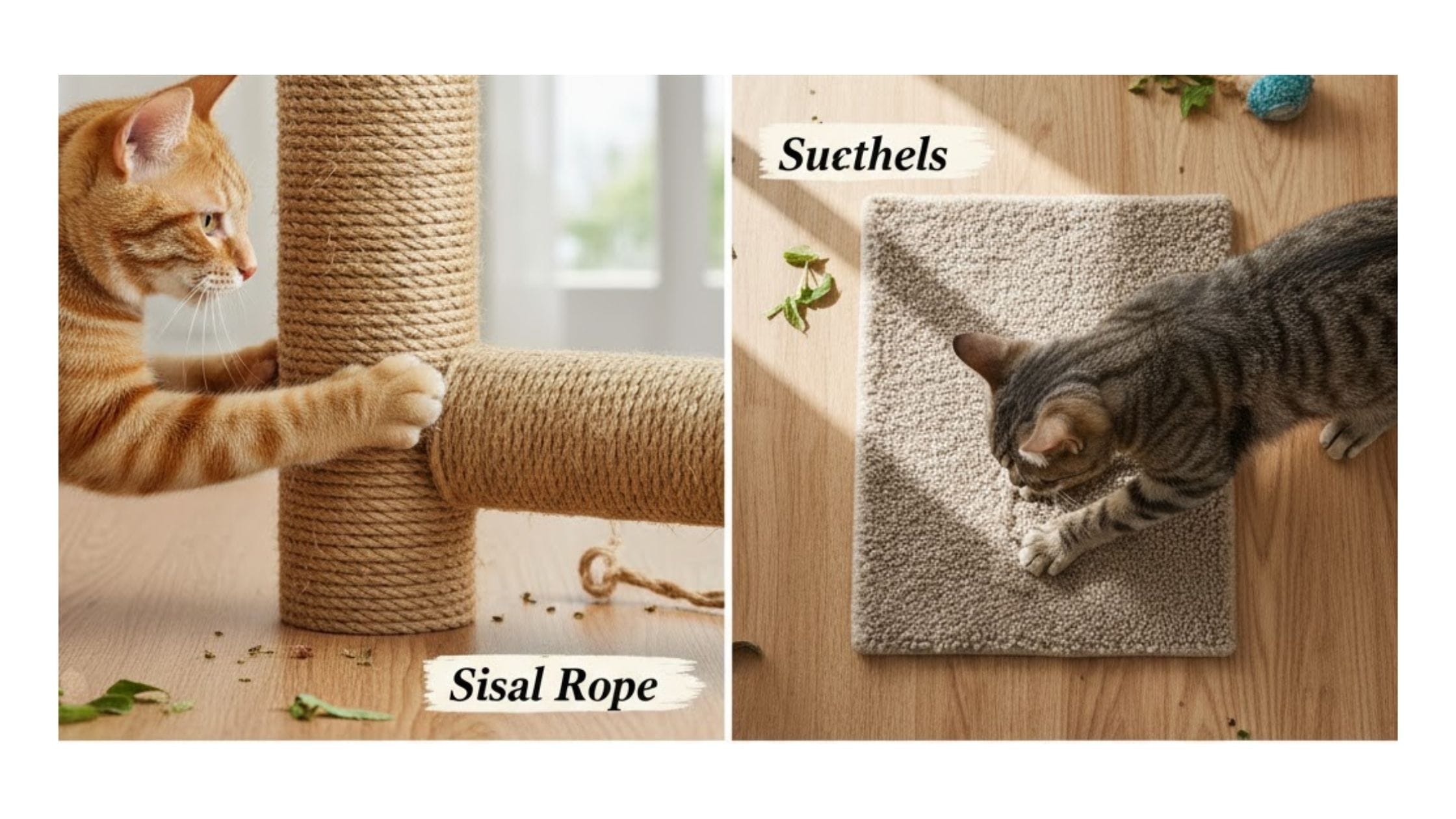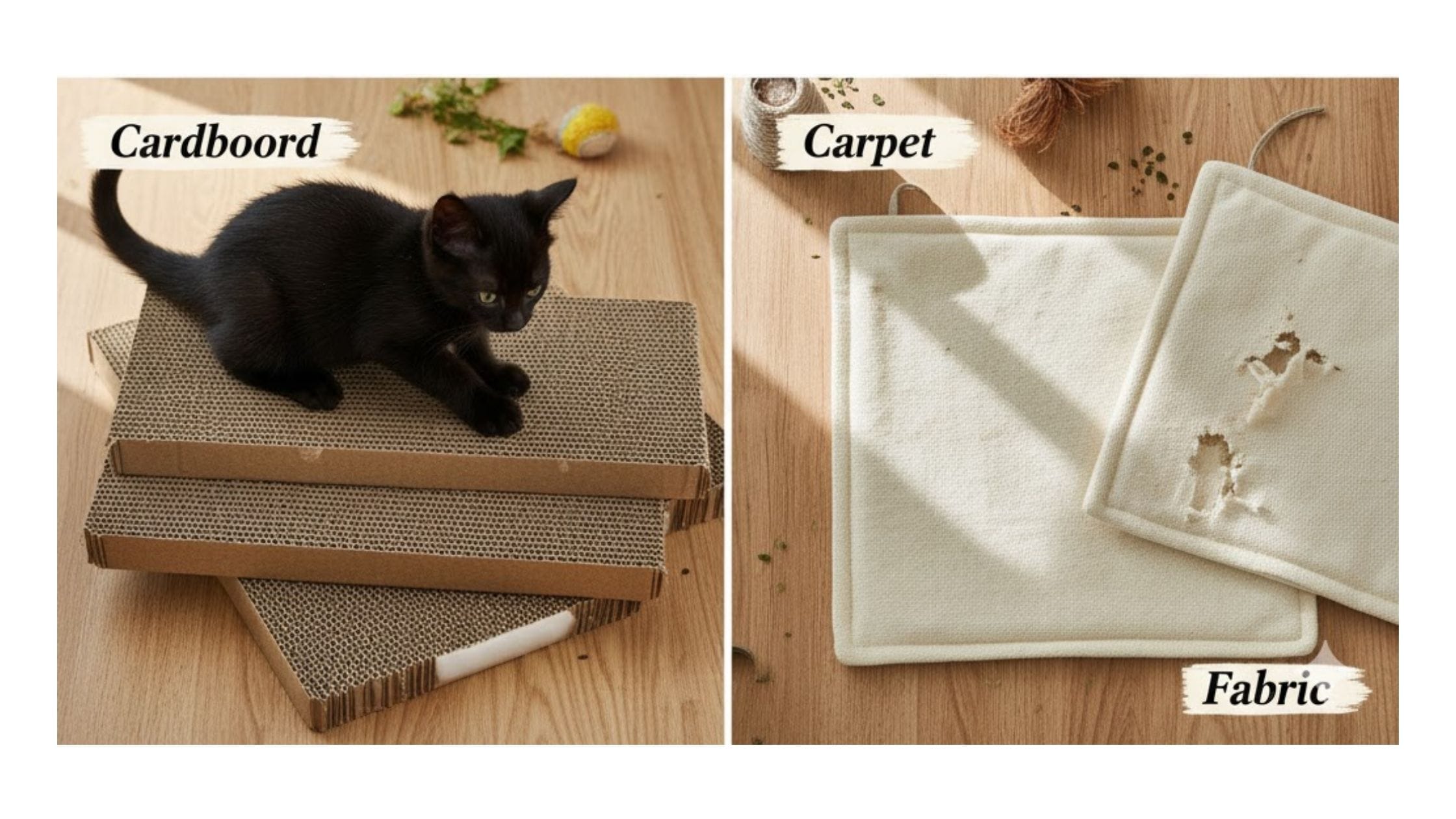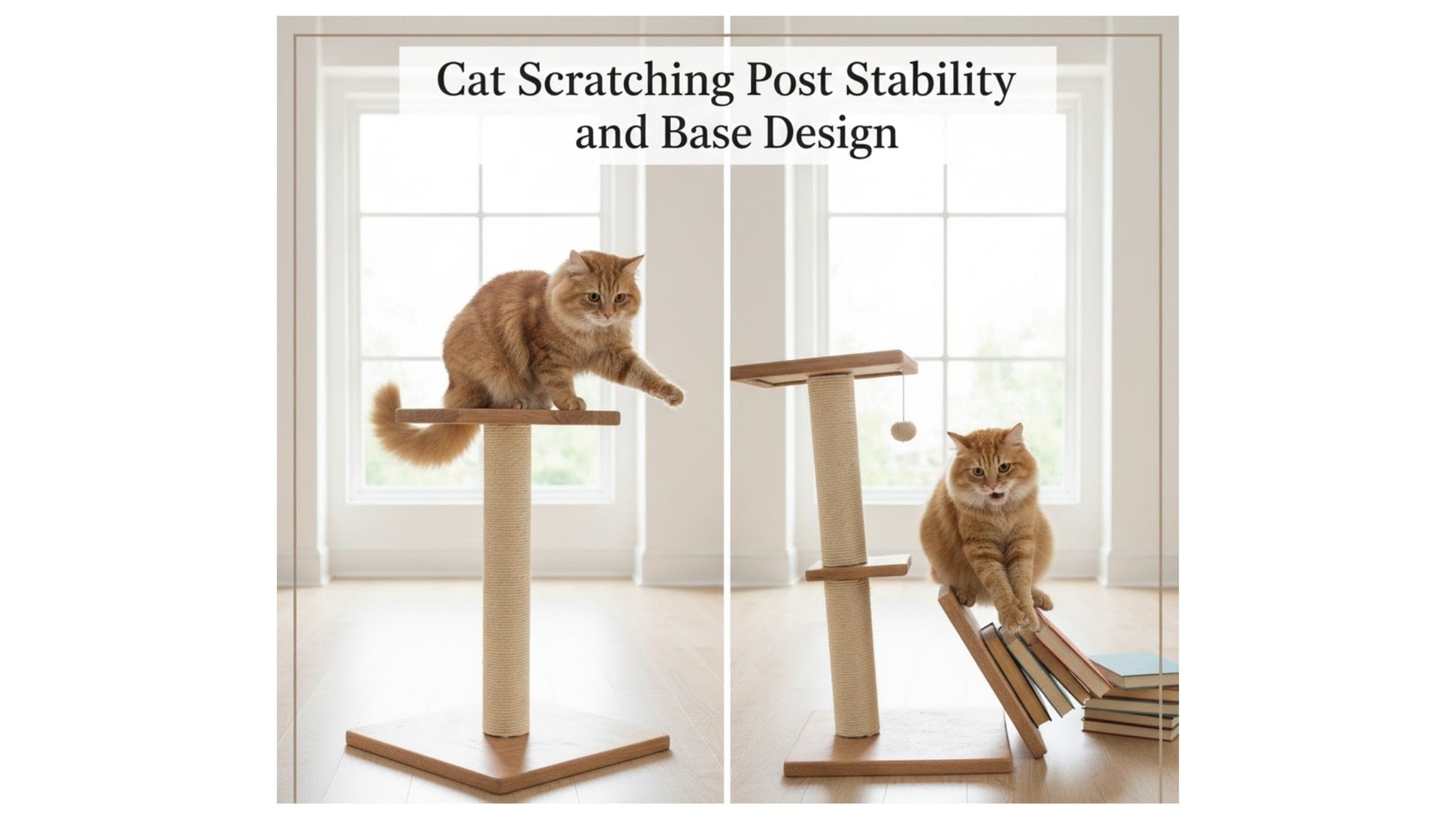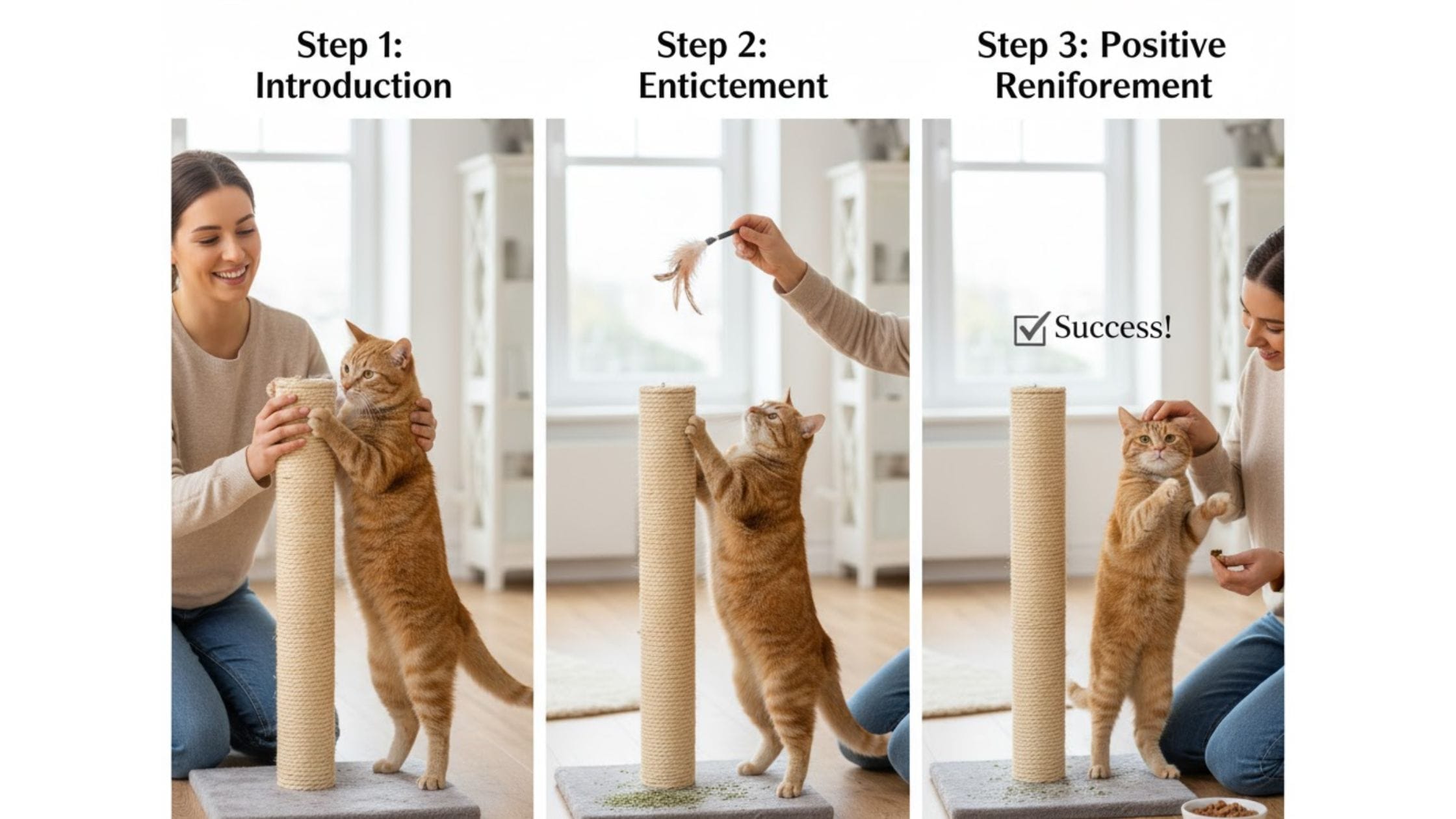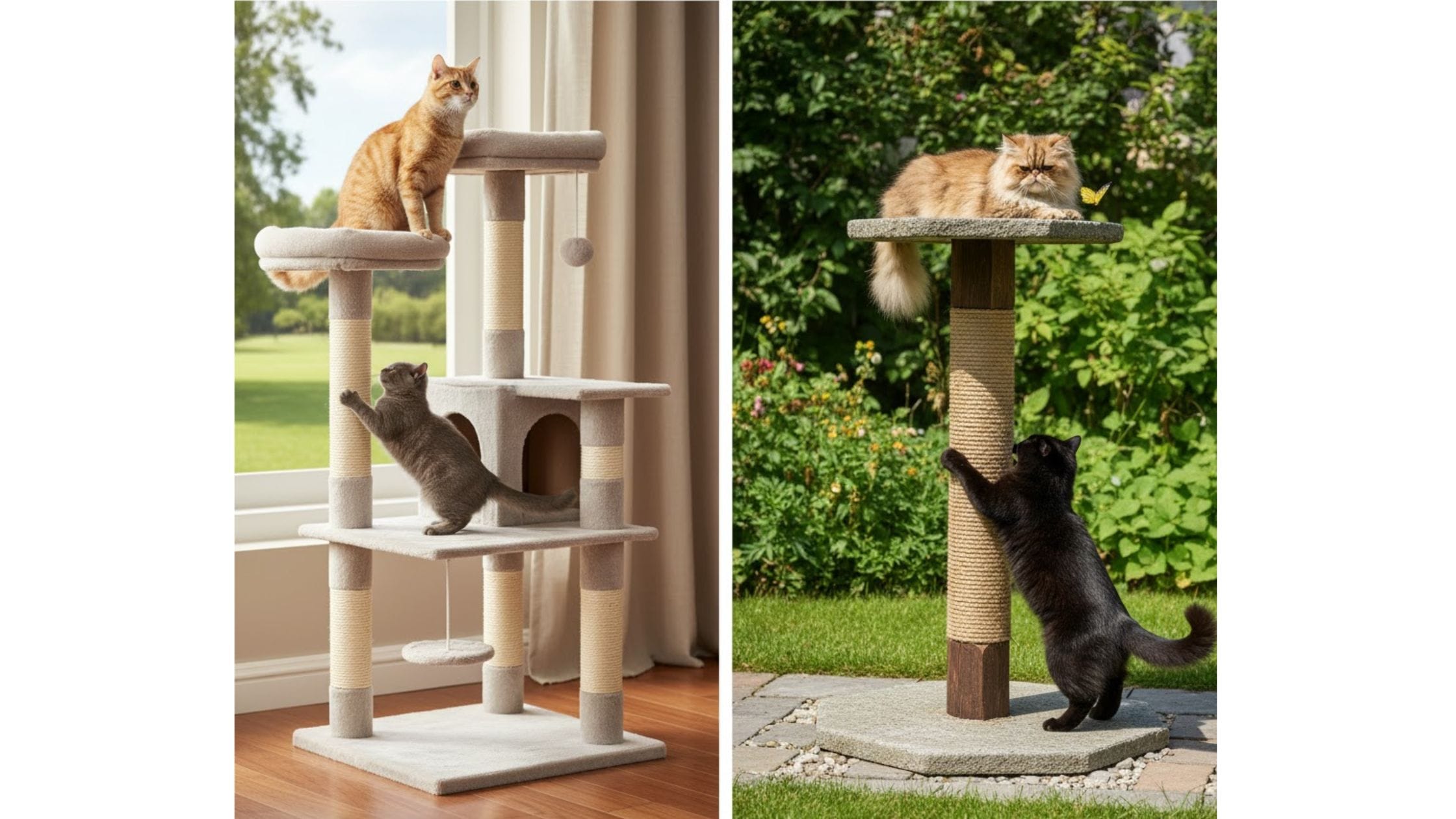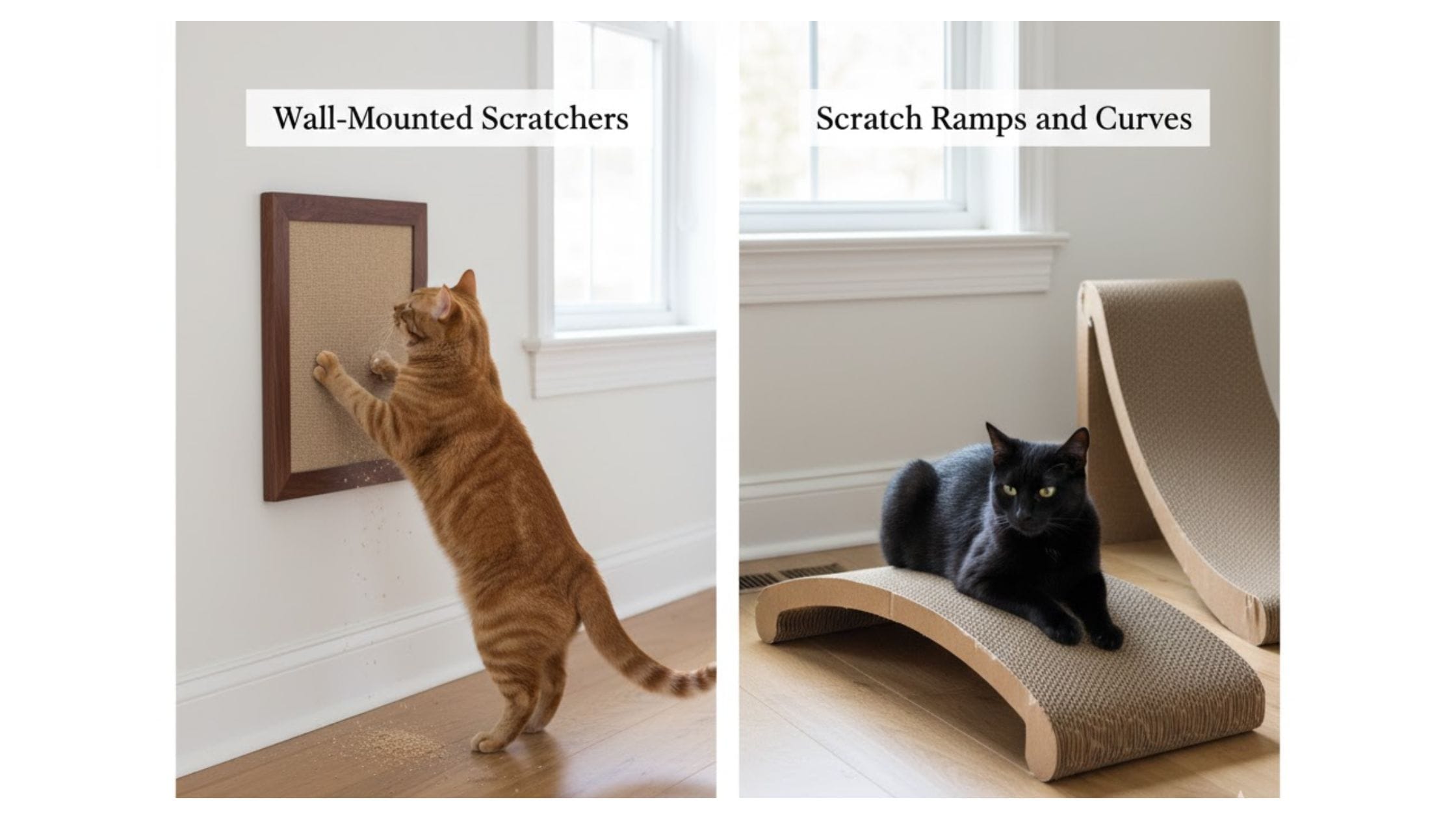Cat Scratching Post
Your cat just shredded your favorite couch again. You love your furry friend, but the destruction needs to stop. A quality cat scratching post saves your furniture and keeps your cat happy.
I’ve spent years helping cat owners find solutions that actually work. This guide shows you exactly what to look for in a scratching post and which options deliver real results.
Why Your Cat Needs a Scratching Post
Cats scratch for important reasons. They sharpen their claws, stretch their muscles, and mark their territory. This behavior comes naturally to every cat, whether they live indoors or outdoors.
Without a proper scratching post, your cat will find alternatives. Your sofa, carpets, and door frames become their scratching surfaces. You can’t train this instinct away—you need to redirect it.
A good scratching post protects your belongings while satisfying your cat’s natural urges. Your cat stays healthy, and your furniture stays intact.
Best Cat Scratching Post Materials for Durability
Sisal Rope Scratching Posts
Sisal rope stands out as the top choice for most cats. This natural fiber provides excellent resistance and texture. Your cat’s claws grip the rope perfectly, giving them a satisfying scratch every time.
Quality sisal posts last for years with regular use. The rope handles aggressive scratching without falling apart. You’ll replace your post based on wear, not failure.
Cardboard Cat Scratchers
Cardboard scratchers offers an affordable option that many cats love. These scratchers lie flat or stand upright. Your cat enjoys the shredding sensation cardboard provides.
The downside? Cardboard needs frequent replacement. Pieces scatter around your floor as your cat scratches. Budget-conscious owners appreciate the low cost, but you’ll buy new ones every few months.
Carpet and Fabric Posts
Some scratching posts use carpet or similar fabrics. These materials work, but they confuse many cats. Your cat might think all carpet is fair game for scratching.
Carpet posts also wear out faster than sisal alternatives. The fibers pull loose quickly, making the post less appealing over time.
How Tall Should a Cat Scratching Post Be?
Height matters more than most people realize. Your cat needs room to stretch fully while scratching. A post that’s too short won’t satisfy this instinct.
Look for posts at least 31 inches tall for adult cats. Taller cats need posts reaching 36 inches or more. Your cat should stand on their hind legs and stretch upward comfortably.
Small kittens manage with shorter posts initially. Plan to upgrade as they grow. A properly sized post gets used regularly; a too-short post gets ignored.
Cat Scratching Post Stability and Base Design
A wobbly post frustrates your cat and creates safety hazards. Your cat approaches with confidence, puts their weight on the post, and expects it to stay firm.
The base needs substantial weight and width. Look for bases measuring at least 16 inches square. Heavier bases (15+ pounds) provide better stability for energetic scratching.
Some designs bolt to walls or floors. These mounted options offer maximum stability but require installation. Freestanding posts work fine if they’re properly weighted.
Vertical vs Horizontal Cat Scratching Posts
Vertical Scratching Posts
Most cats prefer vertical scratching surfaces. They can stretch their full body length and engage all their muscles. Vertical posts feel most natural for territorial marking behavior.
Place vertical posts in high-traffic areas where your cat already likes to scratch. The visibility helps your cat mark their territory effectively.
Horizontal Scratching Pads
Some cats love scratching horizontal surfaces. These cats often scratch carpets and rugs. A horizontal scratcher placed near their favorite spots redirects this behavior.
Horizontal options cost less and take up minimal space. They work perfectly as secondary scratchers alongside a vertical post.
Best Locations for Your Cat Scratching Post
Position matters as much as the post itself. Place your scratching post where your cat naturally wants to scratch. Watch where they currently scratch furniture for clues.
Cats often scratch after waking up. Put a post near their favorite sleeping spot. They’ll stretch and scratch naturally as part of their morning routine.
High-traffic areas work well too. Your cat marks territory in spaces they consider important. Living rooms, entryways, and hallways make excellent locations.
Avoid hiding posts in corners or unused rooms. Your cat won’t seek out an inconvenient scratching location. Make the post easily accessible and visible.
Multi-Level Cat Trees with Scratching Posts
Cat trees combine scratching posts with climbing platforms and resting areas. Your cat gets exercise, entertainment, and scratching opportunities in one piece of furniture.
Look for trees with multiple sisal-wrapped posts. Each level should offer stability, even when your cat jumps between platforms. Cheap cat trees wobble dangerously and get abandoned quickly.
Quality cat trees cost more upfront but replace multiple separate items. You get scratching posts, perches, and play areas together. Space-conscious owners appreciate this efficiency.
How to Train Your Cat to Use a Scratching Post
Make the Post Appealing
Sprinkle catnip on and around the new post. Most cats find catnip irresistible and will investigate eagerly. Rub the post with catnip or spray it with catnip spray.
Play with toys near the post. Dangle feather wands around the post to encourage interaction. Your cat’s natural play movements will lead to scratching.
Redirect Problem Scratching
Catch your cat in the act of scratching furniture. Gently pick them up and place them at the scratching post. Reward them immediately when they scratch the post instead.
Never punish your cat for scratching. Punishment creates stress without solving the problem. Positive reinforcement works much better for changing behavior.
Cover furniture temporarily with double-sided tape or aluminum foil. Cats dislike these textures. They’ll seek alternative scratching surfaces—ideally your new post.
Best Cat Scratching Posts in 2025
Budget-Friendly Options Under $30
Simple sisal posts work perfectly for single-cat homes. Look for 22-inch models post with heavy bases. These basic posts last years and satisfy most cats completely.
Cardboard scratchers start around $10. Buy several and place them throughout your home. Your cat appreciates having options in different rooms.
Mid-Range Posts ($30-$75)
This price range offers taller posts, better materials, and added features. You’ll find 36-inch posts with extra-thick sisal rope. Some include dangling toys or perches.
The build quality improves significantly at this level. Bases use real wood instead of particle board. Posts handle aggressive scratchers without tipping.
Premium Cat Trees ($75-$200+)
High-end cat trees provide complete activity centers. Multiple posts, platforms, caves, and toys keep your cat entertained for hours. These pieces become furniture centerpieces.
Premium construction means these trees last for years, even with multiple cats. Real wood, thick sisal, and quality fabric justify the higher price.
How Often to Replace a Cat Scratching Post
Watch for visible wear on the scratching surface. Sisal rope frays and loosens over time. When large sections look shredded or bare, replacement time arrives.
Most quality posts last 1-3 years with regular use. Multiple cats wear through posts faster. Aggressive scratchers need replacements more frequently than gentle cats.
Don’t wait until the post falls apart. A deteriorating post becomes less satisfying to use. Your cat might return to scratching furniture if their post seems inadequate.
Scratching Posts for Multiple Cats
Multiple cats need multiple scratching options. Don’t expect three cats to share a single post peacefully. Cats mark territory through scratching, creating natural competition.
Plan for at least one post per cat, plus one extra. Place posts in different areas so cats can scratch without conflict. This setup reduces territorial stress significantly.
Cat trees with multiple scratching surfaces work well for multi-cat homes. Each cat can claim different areas of the tree. The variety satisfies different scratching preferences.
Outdoor vs Indoor Cat Scratching Posts
Indoor posts need durability and aesthetics. You’ll look at this post daily, so appearance matters. Choose styles that complement your home décor.
Weather-resistant posts suit covered patios or enclosed outdoor spaces. Look for treated wood and synthetic materials that handle humidity. Natural sisal rope degrades in rain and sun.
Indoor-outdoor cats still need indoor scratching options. They’ll scratch most frequently in their primary living space. Outdoor scratching happens naturally on trees and fence posts.
Cat Scratching Post Alternatives That Work
Wall-Mounted Scratchers
These space-saving options attach directly to walls. Your cat gets vertical scratching without floor space requirements. Install them at the right height for full stretching.
Wall-mounted scratchers work perfectly in small apartments. You can place them exactly where your cat likes to scratch. The permanent installation provides excellent stability.
Scratch Ramps and Curves
Modern designs include curved scratchers that double as lounging spots. Your cat scratches the curve and then naps on top. These stylish pieces look like intentional furniture.
Ramps let your cat scratch at any angle. They approach from different directions for variety. Some cats prefer angled scratching over purely vertical surfaces.
Common Cat Scratching Post Mistakes to Avoid
Buying Too Small
The most frequent mistake involves undersized posts. Your cat can’t stretch properly, so they ignore the post. Measure your cat from nose to tail for guidance.
Poor Location Choices
Hiding the post in a basement or spare room guarantees failure. Cats won’t travel to inconvenient locations for scratching. Put posts where your cat already spends time.
Giving Up Too Quickly
Your cat might need several days to accept a new post. Keep redirecting them positively. Some cats take weeks to fully switch from furniture to posts.
Skipping Maintenance
Tighten loose bases regularly. Remove snagged rope pieces. A well-maintained post stays appealing longer. Neglected posts become unstable and get ignored.
Final Thoughts on Choosing the Best Cat Scratching Post
Your cat’s scratching instinct never disappears. The right scratching post channels this behavior away from your belongings. You’ll both enjoy a more harmonious home.
Start with a tall, stable sisal post in a high-traffic area. Watch how your cat uses it, then add more posts based on their preferences. Multiple scratching options throughout your home provide the best results.
Quality posts cost more initially but last years longer than cheap alternatives. Your furniture stays protected, and your cat stays happy. That combination makes any scratching post a worthwhile investment.
Give your cat the scratching outlet they deserve. Your furniture will thank you, and your cat will purr with satisfaction.

